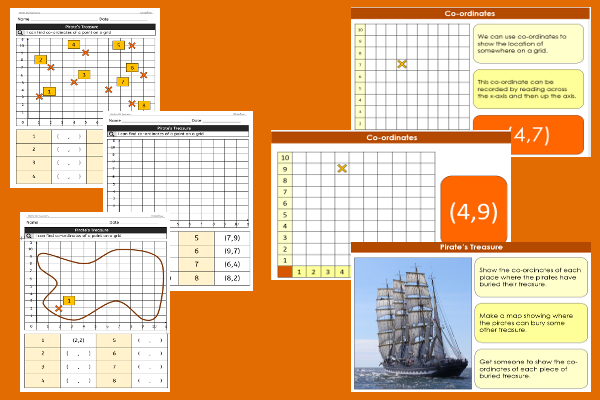Pirate’s Treasure

This maths teaching pack for Key Stage Two gets the children to practise identifying and recording the position of different points in the first quadrant using co-ordinates to find some treasure hidden on an island by pirates.
The class can identify and explain the correct ways of recording the selected co-ordinates correctly using brackets and commas to create some pirate treasure maps.
Download this teaching pack including classroom activities and an interactive presentation to practise identifying and recording the position of different points in the first quadrant using co-ordinates to find some treasure hidden on an island by pirates
Activities in this teaching pack include a set of worksheets to record the position of some different points in the first quadrant using the correct matching co-ordinates and a template to build a map of a treasure island when using sets of co-ordinates to identify different locations.
The interactive presentation gets the children to explore how to identify and record the position of some different points in the first quadrant using co-ordinates.
This lesson is part of a maths scheme of work to get the children to explain and model how to record co-ordinates in the first quadrant to indicate the locations of different locations and points. There are teaching activities for shared learning, differentiated worksheets to support independent learning and interactive presentations to introduce concepts and key skills.
-

French Schools
Learn and practise speaking and writing French vocabulary and word phrases to describe some of the special things that can happen and are used in a school
-

French Sports
Practise speaking and writing French vocabulary words and phrases to describe some different sports and games
-

Roman Settlement
Explore and record what happened when the Romans settled in Ancient Britain and how it impacted the population and made changes to ways of life
-

3D Shape Labels
Identify and record how to label models and illustrations of some different 3D shapes to indicate their special properties
